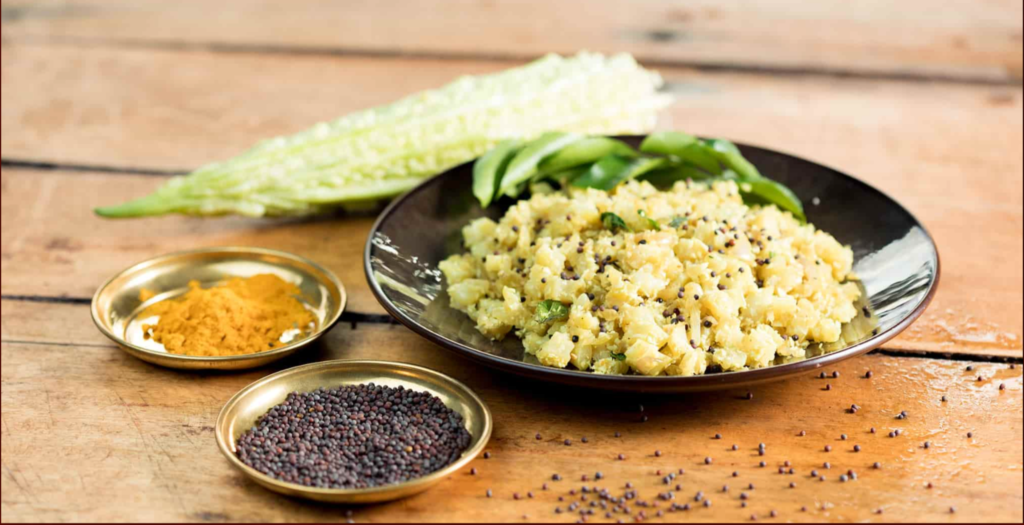
Just as everyone has an individual face or thumb print, according to Ayurveda, each person has a particular pattern of energy – an individual combination of physical, mental and emotional characteristics. Ayurveda identifies three basic types of energy or functional principles that are present in everybody and everything: Vata, Pitta, and Kapha. On this blog, we explain the details of Vata. Please click here for Kapha and Vata.
Pitta people have many of the qualities of fire. Fire is hot, penetrating, sharp, and agitating. Similarly, pitta people have warm bodies, penetrating ideas, and sharp intelligence. However, they can also become very agitated and short-tempered. The pitta body type is one of medium height and build, with ruddy or coppery skin. They may have many moles and freckles. Their skin is warm and less wrinkled than vata skin, their hair tends to be silky and they often experience premature graying or hair loss. Their eyes are of medium size and conjunctiva is moist. The nose is sharp and the tip tends to be reddish.
Pitta people have a strong metabolism, good digestion, and strong appetites. They like plenty of food and liquids. They tend to love hot spices and cold drinks. However, their constitution is balanced by sweet, bitter and astringent tastes. Pitta people sleep well and of medium duration. They produce large quantities of urine and feces, which tend to be yellowish, soft, and plentiful. They easily perspire. Hands and feet stay warm. Pitta people have a lower tolerance for sunlight, heat, or hard physical work. Mentally, pitta types are alert and intelligent and have good powers of comprehension. However, they are easily agitated and aggressive and tend toward hate, anger and jealousy when imbalanced. In the external world, pitta people like to be leaders and planners and seek material prosperity. They like to exhibit their wealth and possessions, Pitta people tend to have diseases involving the fire principle such as fevers, inflammatory diseases and jaundice. Common symptoms include skin rashes, burning sensation, ulceration, fever, inflammations, or irritations such as conjunctivitis, colitis or sore throats.
Since the attributes of pitta are oily, hot, light, mobile and liquid, an excess of any of these qualities aggravates pitta. Summer is a time of heat, the pitta season. Sunburn, poison ivy, prickly heat, and short tempers are common. These kinds of pitta disorders tend to calm down as the weather gets cooler. The diet and lifestyle changes emphasize coolness – cool foods, avoidance of chilies and spices (especially difficult for New Mexicans), and cool climates. People with excessive pitta need to exercise at the coolest part of the day.
General food guidelines for pacifying pitta include avoiding sour, salty and pungent foods. Vegetarianism is best for pitta people and they should refrain from eating meat, eggs, alcohol, and salt. To help calm their natural aggressiveness and compulsiveness, they should incorporate sweet, cooling and bitter foods and tastes into their diets.
Barley, rice, oats, and wheat are good grains for pitta people and vegetables should form a substantial part of their diet. Tomatoes, radishes (except daikon), chilies, garlic, and raw onions should all be avoided. In fact, any vegetable that is too sour or hot will aggravate pitta, but most other vegetables will help to calm it. Salads and raw vegetables are good for pitta types in the spring and summer, as are any sweet fruits. Sour fruits should be avoided with the exception of limes, used sparingly.
Pitta types should only take animal foods, especially seafood and eggs, in moderation. Chicken, turkey, rabbit and venison are all right. All legumes except red and yellow lentils are good in small amounts, with black lentils, chickpeas and mung beans being the best.
Most nuts and seeds have too much oil and are heating for pitta. However, coconut is cooling and sunflower and pumpkinseeds are all right occasionally. Small amounts of coconut, olive and sunflower oils are also good for pitta.
Sweet dairy products are good, including milk, unsalted butter, and ghee, and soft unsalted cheeses. Yogurt can be used if it is blended with spices, a little sweetener and water. In fact, pitta people can use a sweetener better than the other two doshas because it relieves pitta. However, they should avoid hot spice, using cardamom, cinnamon, coriander, fennel and turmeric predominantly, with small amounts of cumin and black pepper.
Coffee, alcohol and tobacco should be completely avoided although the occasional beer may be relaxing for a pitta person. Black tea may also be used occasionally with a little milk and a pinch of cardamom.
General guidelines for balancing pitta: Avoid excessive heat
Avoid excessive oil
Avoid excessive steam
Limit salt intake
Eat cooling, non-spicy foods
Exercise during the cooler part of the day
Remember that your progress toward balance and health is proportional to how well you stick to the guidelines of diet and lifestyle. Old habits sometimes die hard and your changes may be very gradual, but to achieve progress, the changes need to be made. You are in charge of your own rate of change.
You might also like to learn about:


